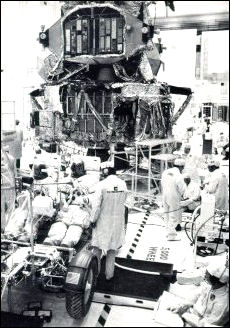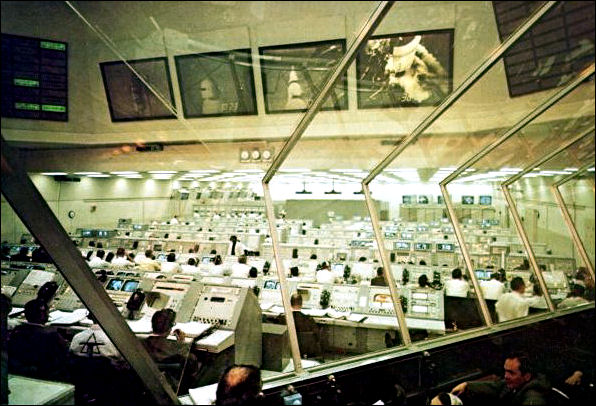
| Checkout and assembly of the Apollo 17 lunar module in a clean room of the Manned Spacecraft Operations Building. In the foreground, the Lunar Roving Vehicle is undergoing its final checkout (with Astronauts Schmitt and Cernan aboard) prior to being packaged and stowed into the descent stage of the lunar module. |




